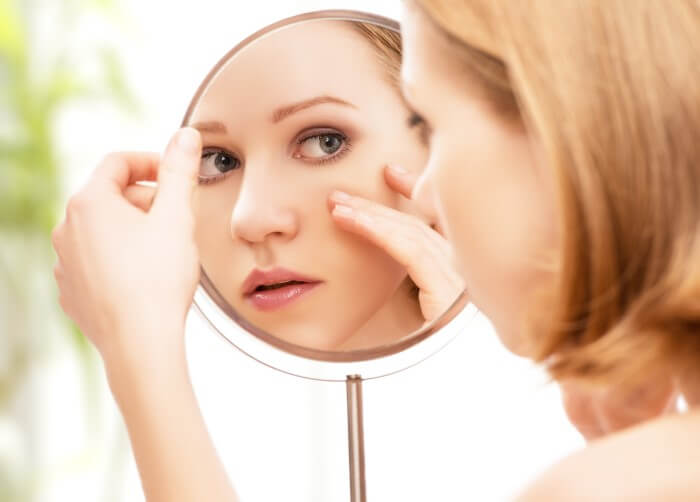Your skin is both your largest organ and your body’s first line of defense against pathogens. However, like other areas of the body, the skin is also vulnerable to developing problems of its own. These can take a number of forms, and while most are relatively benign, some can indicate bigger problems.
At Dermatology and Skin Cancer Center, we recommend coming in for routine skin checkups by Dr. Jeanette Hudgens to ensure skin health. This can also be good for early detection of any problems, so treatment can begin. To schedule your appointment, contact Dermatology and Skin Cancer Center today. In between dermatology appointments, you should do periodic skin checks for sun damage, new moles or spots and skin abnormalities, so you can discuss them with us at your appointment. Here are some things you should look for in your at-home skin checks.
Abnormal Moles
If you have moles, it’s important to check them regularly for changes. Most moles are just moles, but they can also be melanoma, a serious form of skin cancer. In particular, keep an eye out for moles with irregular margins, uneven coloration or those with abnormally dark pigmentation. Even if you’ve had a mole for a long time, you should also be aware of any changes in size and color as this can indicate the development of melanoma.
Dry, Flaky Patches
Dry, flaky skin is a common problem with many causes. For instance, it’s not unusual to struggle with this in the winter since cold, dry air saps moisture from skin. However, having isolated patches of dry, flaky skin can mean you have another problem. These patches can be the result of a condition called seborrheic dermatitis.
This condition typically affects oily areas of the body, like the face and head. Although it’s often chronic and requires persistent treatment to control, it’s not considered a health threat. Another possibility could be eczema, which can be caused by unresolved food allergies and chemical sensitivities to skin products.
Scaling
Skin that develops a thick, scaly appearance is most likely psoriasis. Psoriasis is an autoimmune condition that is believed to affect nearly eight million Americans, and is slightly more common in men than women. The condition isn’t life-threatening, but it can indicate underlying autoimmune dysfunction that could cause other problems. That said, psoriasis has varying levels of severity. Over time, the disease can spread to the muscles, nails and bones. Your dermatologist may be able to recommend a cream or ointment to help control psoriasis.
Raised Bumps
Patches of skin with a rough, bumpy texture like chicken skin are known as keratosis pilaris. This condition is genetic and affects the hair follicles, especially those on the upper arms. When it develops on the face, it may be mistaken for acne. It is estimated to occur in around 50 percent of all people and is generally not problematic. Warts are another skin condition that can cause raised bumps, and can be potentially alarming to find. In the early stages, some people worry that the wart may be melanoma or a tumor. Although warts are usually benign, many people opt to have them removed for cosmetic or practical purposes.

